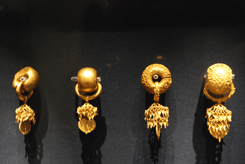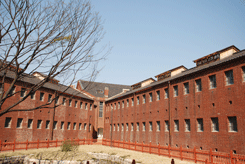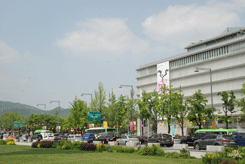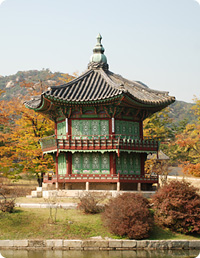DAY
Museums / 7 hours



Tour Highlights
- National Museum of Korean Contemporary History
- National Museum of Korea
- Leeum Samsung Museum of Art
The tour does not run on Mondays.
Seoul (- - -)
Entering the National Museum of Korean Contemporary History, you will be faced with a variety of spatial experiences. As they descend down the ramp and view the exhibition, they will be guided by the circulation of the ramp to walk through the existing façade. The exterior ramp is covered with a fritted glass skin.
The permanent exhibitions cover Korean history from 1876 to the present over 4 main exhibition halls; 1876-1945, 1945-1960, 1961-1987, and 1988-present. The museum showcases a dramatic history; the country's colonization and independence struggle, the foundation of the Republic of Korea, the Korean War, and the post-war economic and political development.
The first exhibition hall covers the period from when Korea opened its ports to foreign countries to when the nation achieved independence. The narrow passageway and low ceiling are spatial representations of the oppression and exploitation under Japanese colonial rule, while barriers and obstacles symbolize the overwhelming trials and tribulations of the period.
The second exhibition hall
is of the foundation of the Republic of Korea, Korean War, post-war economic and political development featuring the authoritarian governments and democratization efforts of the past.
The third exhibition hall covers the period from the 1960s to 80s, when Korea experienced stellar economic growth and the diversification of popular culture. The Korean people's level of social, political, and cultural consciousness advanced, and the democratization movement reached its peak. The protests against military or corrupt powers in more recent decades are well displayed.
The fourth exhibition hall's theme is 'Korea's First' and 'Making the Impossible to Possible'. The 'Korean Workers Overseas' section provides a glimpse into the lives led by miners and nurses dispatched to West Germany and workers to construction projects in the Middle East. Some of the significant exhibits are the first car model manufactured in Korea, some of the firsts in Korea's electronics and the Saemaeul movement that attempted to revitalize rural areas.
In addition, all other displays may leave you feeling like you have arrived in a high-tech, utopian future.
National Museum of Korea is an excellent facility showcasing artifacts from the origins of Korean society, allowing you to experience Korea's unique culture that has evolved through time. It is the sixth largest museum in the world in terms of floor space, now covering a total of 295,000 square meters, containing over 310,000 pieces in its collection with about 15,000 pieces on display at one time. It displays relics and artifacts throughout six permanent exhibition galleries by chronological order, Prehistory and Ancient History Gallery, Medieval and Early Modern History Gallery, Calligraphy and Painting Gallery, and Sculpture and Crafts Gallery.
On entering the soaring glass-roofed central atrium, you are greeted by a 13.5m-high 10-story stone pagoda from the 14th century. This pagoda was illegally smuggled out to Japan, but in 1918 it was fortunately returned and was restored in Gyoengbokgung Palace, but difficult to be conserved because of acid rain and weathering. So it was dismantled again in 1995 until the National Museum of Korea housed it at the 'Path to History' when reopened in 2005.
The unprecedented gathering of the outstanding artifacts will provide you with an opportunity to appreciate the superiority and delicacy of Korean ancient sculptures, paintings and arts of all types. The National Museum of Korea is deeply committed to offer diverse programs aiming to enable visitors to make full use of own historical knowledge learned from schools, which normally follows chronological order. After the historical tour at the ground floor, you will see and experience the beauty of Korean arts on the second and third floor through a wide variety of artworks and cultural properties.
Leeum Samsung Museum of Art houses comprehensive collections of traditional and contemporary art of Korea. Museum 1 designed by Mario Botta, exhibits over 120 pieces of carefully selected traditional art on four floors based on theme and time period, featuring celadon, Buncheong wares and white porcelain, traditional paintings and calligraphy works and Buddhist art and metal works. Museum 2, designed by Jean Nouvel, features modern and contemporary art from both Korean and foreign artists. Child Education & Culture Center was designed by Rem KoolHaas, a subtle design that has upgraded this building complex as an example of harmony and inner circulation within a city. And outdoor exhibition displays one of the Anish Kapoor's artworks.





